We publish the inaugural Charisma Index, rating our attachment to Australia’s leading tour professionals.
Charisma. What is it? Who has it? Why do we admire some athletes and loathe others? Why is Pat Rafter universally loved, while Nick Kyrgios and Bernard Tomic leave a sour impression? How did Michael Clarke go from being a figure of ridicule during his relationship with Lara Bingle to the much-respected captain of Australia who endeared himself to a nation after the tragic death of Phillip Hughes?
By definition, charisma is compelling attractiveness or charm that can inspire devotion in others. Greg Norman had charisma in spades. The Great White Shark has been our most marketable athlete and it was his charisma that sparked a golf boom, spanning two decades, across Australia.
In an attempt to quantify likeability in golfers, we have created The Charisma Index. It’s intended to measure the attachment we have for Australia’s most high profile professional golfers who compete on the US PGA Tour.
Eleven players have been analysed: Jason Day, Adam Scott, John Senden, Marc Leishman, Steven Bowditch, Matt Jones, Geoff Ogilvy, Stuart Appleby, Greg Chalmers, Aaron Baddeley and Robert Allenby. We singled out these players because of their familiarity with Australian golfers through their longevity on the US PGA Tour.
We rated them across 10 categories to assess their charisma – and subsequently their marketability – because it stands to reason that sponsors clamour towards athletes with charisma.
The categories are: Winning/Contending (Career), Winning/Contending (Recent Form), Physical Appearance and Demeanour, Shotmaking, Fighting Qualities, Media Profile, Avoiding Scandal, Giving Back, Supporting The Australian Tour and Interacting With Fans.
Each category is rated out of 5: Excellent 5, Very Good 4, Good 3, Mediocre 2, Poor 1. After all categories are assessed, we were able to calculate a Charisma Index rating out of 50.
There is an explanation for the criteria of each category over the following pages. Then at the end of the feature you’ll see the inaugural Charisma Index of Australia’s leading male professional golfers. We pay particular attention to Adam Scott and Jason Day, as they are what we consider to be world-class golfers.
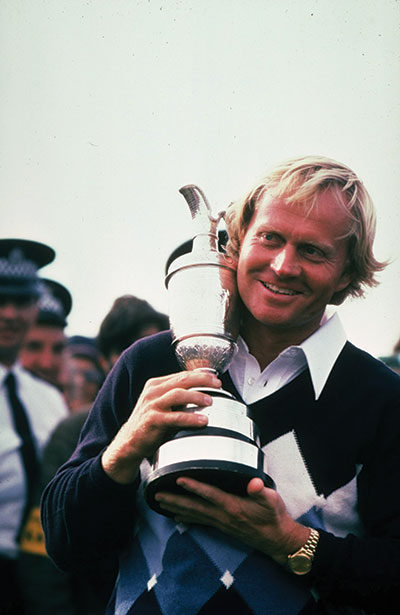
Winning/Contending (Career)
Benchmark: Jack Nicklaus
Winning/Contending (Recent Form)
Benchmark: Rory McIlroy
In order to acknowledge how a golfer’s on-course success relates to how they are perceived, we placed a greater emphasis on Winning/Contending. We awarded 5 points for Career performances and another 5 points for Recent Form. Therefore, Winning/Contending makes up 20 per cent of a player’s Charisma Index.
Being in contention to win rates in our analysis because of the difficulty to succeed in a sport where a field may comprise up to 156 players. Jack Nicklaus is the natural benchmark, having won 18 Majors and registering 56 top-five finishes in the four biggest championships.
The mere act of winning translates to charisma. Do you remember when people doubted whether Adam Scott had the charisma to take over the baton from Greg Norman? Well, that was before Scott started to contend in Majors, before he won the Masters and before he climbed to the summit of the Official World Golf Ranking.
Of his 27 professional titles, Scott has won six in the past three years to be our most prolific winner based on Recent Form. You could argue he should win more often, but nevertheless Scott should be a certainly for inclusion into the World Golf Hall of Fame when he finishes his Career.
At 27 years of age, Jason Day hasn’t achieved the number of wins to reflect his ability. However, he has already notched nine top-10s in his first 20 Major appearances. Steven Bowditch has the third highest score in the Recent Form category, recording two wins in 14 months on the US PGA Tour.
Stuart Appleby, Aaron Baddeley and Robert Allenby all score well in the Career category, but not so well on Recent Form due to their lack of presence on tournament leaderboards.
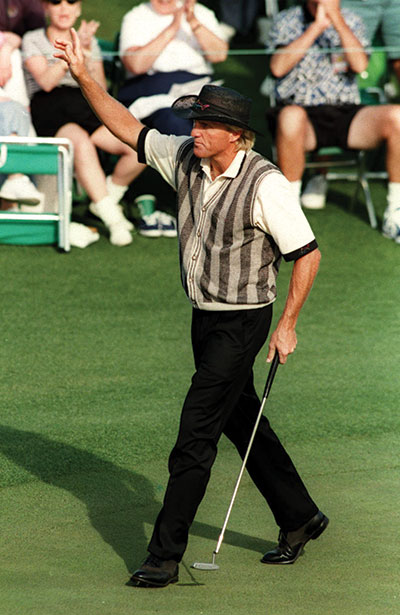
Physical Appearance and Demeanour
Benchmark: Greg Norman
Much of the initial appeal of pro golfers is tied to their Physical Appearance and Demeanour. It’s easier to build a rapport with a player who has an athletic frame and sartorial elegance from head to toe. Outward behaviour is important because we want to see professional golfers having fun. They’re living the life that most people can only dream about.
Australians were treated to the sight of Greg Norman striding the fairways for three decades. With square shoulders and striking blond hair, the Great White Shark was a captivating presence with a special aura. He was the Pied Piper of Australian golf, drawing fans to tournaments.
There’s a reason why it’s said men want to be Adam Scott, while women want to be with him. He looks as though he’s just stepped out of a GQ photo shoot. He’s one of the few golfers who can make a three-day growth look stylish. But he loses half a point for wielding an ungainly long putter.
Appleby is a superb physical specimen, while John Senden epitomes smart casual. Baddeley can pull off plaid and white belts. And Bowditch has lifted his game on the fashion front.
Day looks like a finely tuned athlete, but loses marks for wearing too many brightly coloured hi-vis polo shirts. Greg Chalmers makes walking look difficult (given that he has one leg shorter than the other), whereas Allenby makes smiling look difficult.
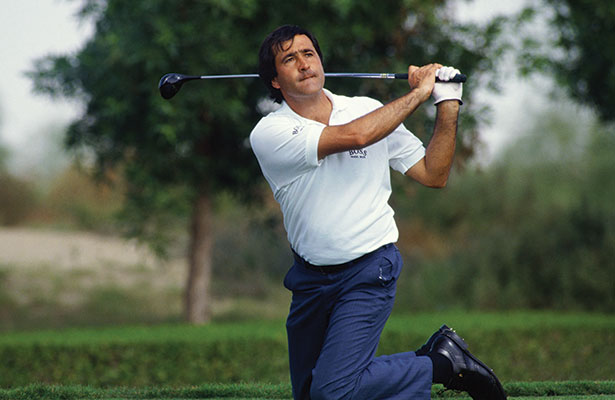
Shotmaking
Benchmark: Seve Ballesteros
Shotmaking is the art of visualising and executing golf strokes. When the degree of difficulty is high, it’s the ability to call upon your creative genius to produce outstanding strokes. Great shotmaking is intrinsically tied with charisma because it provides excitement. It’s why we tune in to watch golf instead of tenpin bowling.
Seve Ballesteros is the yardstick to measure wizardry with a golf club. Seve could manufacture extraordinary shots from all sorts of lies. He could escape a greenside bunker with a 3-iron. Of the modern-day players, only Bubba Watson could be mentioned in the same breath as the Spanish maestro. The American left-hander produced his signature shot on Augusta National’s 10th hole during the playoff for the 2012 Masters. Deep in the woods with his ball sitting on pine needles, Watson hooked his approach some 40 metres with a 52-degree gap wedge. The shot finished within 15 feet of the flag.
The British Open is the ultimate test of shotmaking, as it requires imagination to handle exposed windy conditions. With a superb record in the Open, Scott scores highly in Shotmaking. He can move the ball both ways, high and low, while his short game is vastly underrated due to the distraction from his copybook swing.
Day doesn’t possess the same repertoire of shots, preferring a consistently high ball flight that is ideally suited for tournament play on the US PGA Tour. While his long game may be a bit one-dimensional, Day’s short game is pure class.
Most of the leading Australians score well in this category, except Baddeley who struggles to hit the ball where he aims – a prerequisite for good Shotmaking.
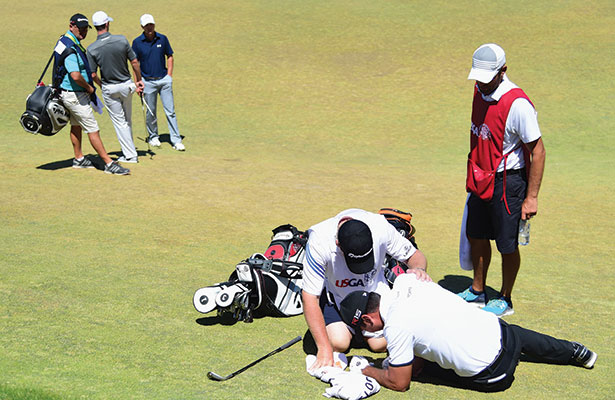
Fighting Qualities
Benchmark: Gary Player/Jason Day
While we admire athletes blessed with raw talent, those that exhibit resilience and an ability to overcome adversity – Fighting Qualities – are often the ones that leave the most indelible impression.
Basketballer Matthew Dellavedova – short of stature but large of heart – captured the imagination of sports fans around the world with his gritty performances for the Cleveland Cavaliers during the recent NBA Finals. Cadel Evans is another great competitor, having excelled in a sport where many leading cyclists succumbed to performance-enhancing drugs in order to compete at the highest level.
All of our leading Australian players have shown a substantial degree of ticker. It takes a lot of sacrifices to leave the comfort of Australia and make it onto the US PGA Tour.
However, Day elevated himself to another level with a courageous performance at this year’s US Open after collapsing during the second round. Just to finish the tournament – battling the effects of benign positional vertigo – told us a lot about his temperament and fighting spirit. We knew Jason was tough (having rebounded from losing his father as a teenager) and his effort at Chambers Bay reinforced that characteristic.
Bowditch has turned his life around while coping with depression and is now a poster boy for the beyondblue organisation. He almost receives top marks for Fighting Qualities, but suffers from the withdrawals and missed cuts from his early days in the US.
Stuart Appleby is “the prizefighter of the US PGA Tour”, according to Fox Sports’ analyst Paul Gow, because he has achieved longevity without any notable strength to his game. He has also rebounded from adversity, having lost his first wife Renay in a tragic accident. It would have been very easy for Stuart to give the game away.
Chalmers is another fighter who doesn’t have the arsenal of the big bombers on tour. And at his best, Allenby has shown he can fight through the pain barrier. He won the 2005 Australian Open at Moonah Links despite a painful hand injury on a very demanding golf course.
Scott doesn’t receive much credit for his Fighting Qualities. But you don’t reach No.1 in the world without having a big heart. Still, Adam hasn’t shown enough in the heat of battle to deserve more than a 3 (Good) rating. His collapse over the closing holes of the 2012 British Open at Royal Lytham and at this year’s British Open can’t be forgotten. He has to display more grittiness – because he won’t have Steve Williams on the bag forever.
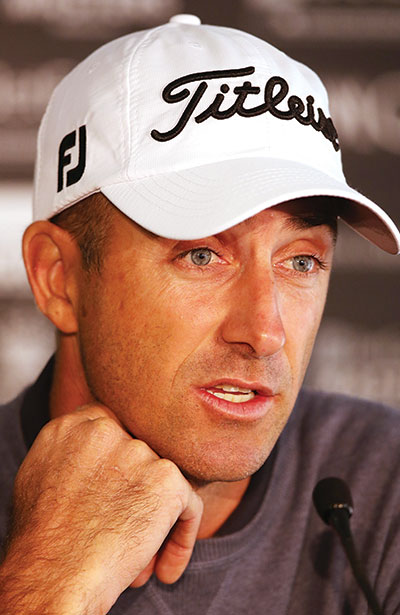
Media Profile
Benchmark: Geoff Ogilvy
The manner in which the public perceives professional golfers has a lot to do with how they’re portrayed by the print and broadcast media. So it’s important that golfers present themselves in the best possible fashion.
To achieve this, they need to speak fluently and coherently about golf. When a golfer is invited into the media centre after taking a share of the tournament lead, what golf writers seek are interesting observations. We don’t want to hear a player telling us they’re going to take one shot at a time.
Geoff Ogilvy [below] is the master of offering insightful comments about all matters golf. He is measured when he speaks and sounds as if he is searching for the right turn of phrase to best describe his thoughts. Little wonder the great American writer Jaimie Diaz called him “the best interview in golf”. Scott is becoming more accustomed to his role as the flagbearer of Australian golf and has become more articulate in recent years. Day is refreshing in the sense that he tends to say what’s on his mind. Both Appleby and Chalmers are capable of delivering pearls of wisdom.
Avoiding Scandal
Benchmark: Byron Nelson
The essence of a professional golfer is learning to behave in a professional manner. And that means honouring the traditions of the game and Avoiding Scandal.
Most of our leading Australians have a squeaky clean image. You wouldn’t hear a bad word said of Senden, Marc Leishman, Matt Jones, Chalmers or Baddeley. Now that he’s a happily married father, Scott’s love life is no longer fodder for the gossip pages. His score is higher than what it would have been a few years ago. Even Bowditch seems to have put his troubled past behind him.
But there is one Australian golfer who constantly finds himself embroiled in controversy: Robert Allenby. He got a bad reputation early in his career because of a penchant for sacking caddies. That reputation resurfaced at the Canadian Open in July when he sacked his caddie mid-round.
Trouble has followed Allenby ever since he crashed his car into a Spanish roundabout in 1996. But it’s got worse in the past decade. In 2006, Allenby engaged in a public feud with Mark Hensby, labelling him a “wanker”. At the 2009 Presidents Cup, after losing a Sunday Singles match to Anthony Kim, he implied the American was drunk from the night before. Then after failing to earn a point for The Internationals at the 2011 Presidents Cup, he attributed blame to teammates Retief Goosen, Y.E. Yang and Geoff Ogilvy for his poor play. The following week he was involved in a heated argument with Ogilvy at Coolum. His most infamous moment occurred in January when, according to Allenby, he was abducted, robbed and bashed after drinking with friends in Hawaii.
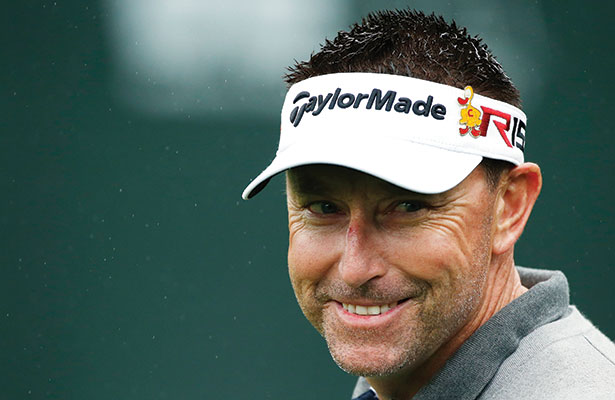
Giving Back
Benchmark: Robert Allenby
With generous amounts of prizemoney each week on the US PGA Tour, it would be easy to condemn professional golfers as spoilt rotten. That’s why we regard Giving Back to the community as an important part of the Charisma Index. It shows a human side to players and makes us respect them for who they are, rather than for simply how well they hit a golf ball.
Allenby excels in his charitable work with Challenge, which supports children living with cancer and other life-threatening blood disorders. During the past 23 years he has hosted the Robert Allenby Golf Day and Gala Dinner, raising more than $26 million. We suspect Allenby may be remembered more for his charitable deeds than his golf in years to come.
The Adam Scott Foundation raises funds to provide life opportunities for Australian and Asian youth: building youth centres, offering university scholarships and providing laptop computers for sick children.
Appleby and Baddeley also score highly for putting back into junior golf. And Bowditch does a wonderful job as an ambassador for beyondblue.
Supporting The Australian Tour
Benchmark: Greg Norman
To take into account the impact our leading pros have on the industry back home, we created a special category: Supporting The Australian Tour. Primarily, it’s about competing in our three biggest tournaments: the Australian Open, Australian PGA and Australian Masters. It’s all very well being seen playing the US PGA Tour on Foxtel, but imagine what it would be like if none of the leading Australian players came home at the end of the year.
Fortunately, all of our top pros have shown commitment to the PGA Tour of Australasia. Several have American wives and most have their primary residence in the US. So we shouldn’t take their appearances for granted. Bruce Crampton, Bruce Devlin, David Graham and Steve Elkington are four players who shunned tournament golf in Australia for the latter half of their careers.
Scott receives top marks for Supporting The Australian Tour. His pride was on display after the 2013 Masters victory when he took the green jacket on a Tour de Force to all three of our biggest championships. This is a category where Day can improve since Jason has rarely played on home soil in recent years.
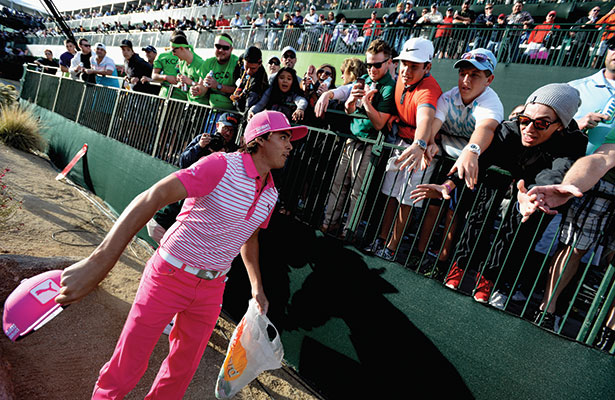
Interacting With Fans
Benchmark: Rickie Fowler
Professional golfers are sportsmen, but they’re also entertainers since their income is derived from corporate sponsorship of the game. Interacting With Fans is about letting the public get to know and relate to them.
In this regard, we value showmanship – fist pumping, playing to the crowd and the on-course theatrics that provide a sense of occasion. For example, Scott’s fist pump after clinching the 2013 Masters.
This category is also about letting fans be a part of the experience, for instance, Bowditch signing a young fan’s ball on the 17th hole of his Byron Nelson Championship win in June. It’s the interaction away from the golf course, like maintaining a website and engaging on social media. That isn’t for everybody and players deserve their privacy. And it’s not the Australian way to be extroverted. Yet most of our pros share their experiences, posting regularly on Twitter with words and pictures.
Summary
So they are the 10 categories. A cursory glance onto the following page reveals that Adam Scott has the highest Charisma Index of the leading Australian professionals. That shouldn’t come as too much of a surprise.
The most obvious way in which a player can improve his Charisma Index score is simply to win. That can lead to higher scores in categories like Media Profile, Giving Back and Interacting With Fans.
As to the player with the biggest upside: Steven Bowditch. At 32 years of age, he is in that traditional window for Australian players to win a Major championship. With his compelling story of triumph over adversity, he could become a household name if can snare one of golf’s biggest prizes.
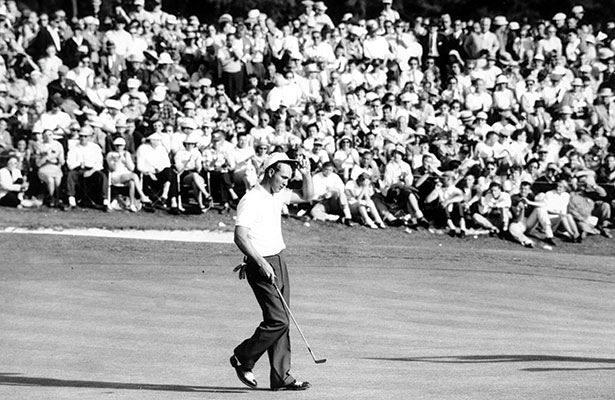
Arnold Palmer: The People’s Champion
In terms of the ultimate barometer of Charisma, look no further than Arnold Palmer, the most marketable golfer of all time. Palmer single-handedly made golf cool to the American masses and the sport thrived on television through his showmanship and swashbuckling style.
|
Official World Golf Rating |
4 |
11 |
51 |
61 |
62 |
70 |
106 |
205 |
219 |
316 |
382 |
|
PLAYER |
Jason Day |
Adam Scott |
John Senden |
Marc Leishman |
Steve Bowditch |
Matt Jones |
Geoff Ogilvy |
Stuart Appleby |
Greg Chalmers |
Aaron Baddeley |
Robert Allenby |
|
Categories |
|||||||||||
|
Winning / Contending |
3.5 | 4.5 | 3 | 3 | 3 | 2 | 4.5 | 4.5 | 3 | 3 | 3.5 |
|
Winning / Contending |
4 | 4.5 | 3 | 3 | 3.5 | 3 | 3 | 1.5 | 2.5 | 1.5 | 1.5 |
|
Physical Appearance |
4 | 4.5 | 4 | 3.5 | 3 | 3.5 | 3 | 4 | 2 | 4 | 1.5 |
|
Shotmaking |
4 | 4.5 | 4 | 4 | 4 | 4 | 4 | 3.5 | 3 | 2.5 | 3 |
|
Fighting Qualities |
5 | 3 | 3 | 3.5 | 4 | 3 | 3 | 4.5 | 4 | 3 | 4 |
|
Media Profile |
3.5 | 3.5 | 3 | 3 | 3 | 3 | 5 | 4 | 4 | 3 | 2 |
|
Avoiding Scandal |
4.5 | 4 | 4.5 | 4.5 | 3 | 4.5 | 3 | 4 | 4.5 | 4.5 | 0 |
|
Giving Back |
3 | 5 | 3.5 | 3 | 4 | 3 | 3.5 | 4 | 3.5 | 4 | 5 |
|
Supporting Australian Tour |
2.5 | 5 | 4.5 | 4 | 4 | 4 | 4.5 | 4.5 | 4.5 | 4.5 | 4.5 |
|
Interacting With Fans |
4.5 | 4 | 3.5 | 3 | 4 | 3.5 | 3 | 4.5 | 3 | 4.5 | 4 |
|
CHARISMA |
38.5 |
42 |
36 |
34.5 |
35 |
33.5 |
36.5 |
38 |
34 |
34.5 |
29 |
Points Rating
5 – Excellent
4 – Very Good
3 – Good
2 – Mediocre
1 – Poor
0 – Abysmal
The Charisma Index
40-50 – A marketeer’s dream
35-39 – Enormous potential
30-34 – Selling themselves short
25-29 – Does he really enjoy golf?
<25 – Should consider a change of profession




